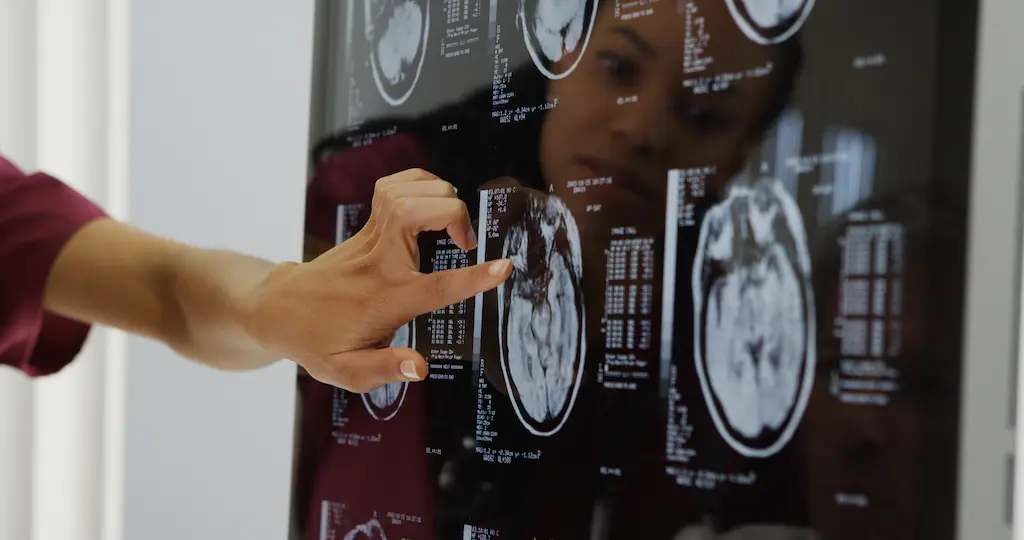What is Soft Tissue Damage?
Car accidents are a leading cause of soft tissue damage, which can be a painful and debilitating injury. Soft tissue refers to the muscles, tendons, and ligaments that connect and support the bones and joints. These tissues can be injured in a variety of ways during a car accident, such as when the body is jolted or twisted suddenly, or when it is struck by a hard object.
Symptoms of soft tissue damage can vary depending on the severity of the injury, but they often include pain, swelling, bruising, and stiffness. The pain may be sharp or aching, and it may worsen with movement. The swelling and stiffness can make it difficult to move the affected area, and it may also cause numbness or tingling.
Soft tissue damage can be treated with a variety of methods, depending on the severity of the injury. Treatment may include rest, ice, compression, and elevation (RICE); physical therapy; and medication. In some cases, surgery may be necessary to repair damaged tissue.
Common Signs and Symptoms of Soft Tissue Damage
The following are some of the most common signs and symptoms of soft tissue damage:
- Pain
- Swelling
- Bruising
- Stiffness
- Numbness or tingling
- Weakness
- Loss of range of motion
If you are experiencing any of these symptoms after a car accident, it is important to see a doctor to rule out any more serious injuries.
Causes of Soft Tissue Damage
Soft tissue damage can be caused by a variety of factors, including:
- Direct impact
- Sudden twisting or jerking
- Overuse
- Repetitive motions
Car accidents are a common cause of soft tissue damage, as the sudden impact and jerking motion can cause the muscles, tendons, and ligaments to be stretched or torn.
Diagnosis and Treatment of Soft Tissue Damage
Soft tissue damage is typically diagnosed based on a physical examination and the patient’s history of symptoms. Your doctor may also order imaging tests, such as an X-ray or MRI, to rule out any other injuries.
Treatment for soft tissue damage typically involves rest, ice, compression, and elevation (RICE). Your doctor may also recommend physical therapy to help you regain range of motion and strength in the affected area. In some cases, medication may be prescribed to relieve pain and inflammation.
Soft Tissue Damage After Car Accident: A Guide to Symptoms, Treatment, and Prevention
After a car accident, it’s not uncommon to experience some discomfort. But if you’re dealing with ongoing pain, swelling, and stiffness, you may have suffered soft tissue damage.
Soft tissue refers to the muscles, ligaments, tendons, and other connective tissues that support and surround your joints. When these tissues are injured, it can lead to a range of symptoms that can make it difficult to move and function normally.
Symptoms of Soft Tissue Damage
The symptoms of soft tissue damage can vary depending on the severity of the injury. These symptoms include:
- Pain: The most common symptom of soft tissue damage is pain. The pain can be sharp, throbbing, or aching, and it may worsen with movement.
- Swelling: Swelling is another common symptom of soft tissue damage. The swelling is caused by inflammation, which is the body’s natural response to injury.
- Bruising: Bruising is a common symptom of soft tissue damage that occurs when blood vessels are damaged. The bruising may appear as a black, blue, or purple discoloration of the skin.
- Difficulty moving: Soft tissue damage can make it difficult to move the injured area. This is because the pain and swelling can make it difficult to use the muscles and joints properly.
Causes of Soft Tissue Damage
Soft tissue damage can be caused by a variety of factors, including:
- Car accidents
- Sports injuries
- Falls
- Overuse injuries
Treatment for Soft Tissue Damage
The treatment for soft tissue damage typically involves rest, ice, compression, and elevation (RICE). RICE helps to reduce pain and swelling and promotes healing. In some cases, physical therapy may also be necessary to help restore range of motion and function.
Prevention of Soft Tissue Damage
There are a number of things you can do to help prevent soft tissue damage, including:
- Warming up before exercise
- Wearing proper safety gear when playing sports
- Avoiding falls
- Maintaining a healthy weight
- Eating a healthy diet
Conclusion
Soft tissue damage is a common injury that can be caused by a variety of factors. The symptoms of soft tissue damage can vary depending on the severity of the injury, but they typically include pain, swelling, bruising, and difficulty moving the injured area. Treatment for soft tissue damage typically involves rest, ice, compression, and elevation (RICE). In some cases, physical therapy may also be necessary to help restore range of motion and function. There are a number of things you can do to help prevent soft tissue damage, including warming up before exercise, wearing proper safety gear when playing sports, avoiding falls, maintaining a healthy weight, and eating a healthy diet.
Soft Tissue Damage: A Hidden Consequence of Car Accidents
Car accidents are often associated with broken bones and lacerations, but they can also cause a type of injury that’s not always immediately apparent: soft tissue damage. This damage occurs when the muscles, ligaments, tendons, or other connective tissues in the body are stretched, torn, or bruised. While soft tissue damage may not be as obvious as a broken bone, it can still be very painful and debilitating.
If you’ve been in a car accident, it’s important to be aware of the potential for soft tissue damage. Even if you don’t feel any pain immediately, you may develop symptoms later on. These symptoms can include:
- Pain
- Swelling
- Bruising
- Stiffness
- Numbness or tingling
- Loss of range of motion
Causes of Soft Tissue Damage
Soft tissue damage is typically caused by a direct impact to the body or by a twisting or jerking motion. In a car accident, soft tissue damage can be caused by:
- The force of the impact
- The sudden deceleration or acceleration of the body
- The twisting or jerking of the body
Soft tissue damage can also be caused by airbags, seatbelts, or other safety devices. These devices can help to prevent more serious injuries, but they can also cause soft tissue damage if they are not used properly.
Mechanism of Injury
The force of a car accident can cause the body to be suddenly and forcefully stretched, twisted, or compressed. This can overstretch or tear the muscles, ligaments, and tendons that support and connect the bones. Additionally, the impact of the crash can cause blood vessels to rupture, leading to swelling and bruising.
The location and severity of the soft tissue damage will depend on the type of accident and the force of the impact. Common areas for soft tissue damage after a car accident include the neck, back, shoulders, and knees.
Who’s at Risk?
Anyone involved in a car accident is at risk of suffering soft tissue damage, but some people are more vulnerable than others. These include:
- People who are older
- People who are overweight or obese
- People who have preexisting injuries or conditions that affect their muscles, ligaments, or tendons
- People who are not wearing seatbelts
Suffering from Soft Tissue Damage After a Car Wreck? Here’s What to Do
Experiencing a car accident is a jarring event that can leave lasting physical and mental consequences, including soft tissue damage. Soft tissue damage encompasses a range of injuries to muscles, ligaments, and tendons, often resulting in pain, swelling, and limited movement.
After a car crash, it’s crucial to seek medical attention immediately to assess and treat any injuries sustained. Soft tissue damage may not always be apparent right away, but it can develop over time, so prompt medical evaluation is essential.
Symptoms of Soft Tissue Damage
Common symptoms of soft tissue damage include:
- Pain and tenderness
- Swelling and bruising
- Stiffness and difficulty moving
- Muscle weakness
- Numbness or tingling sensations
Treatment for Soft Tissue Damage
The primary treatment for soft tissue damage involves rest, ice, compression, and elevation (RICE):
- Rest: Avoid activities that aggravate the injury and allow the tissues to rest and recover.
- Ice: Apply ice packs to the affected area to reduce inflammation and swelling.
- Compression: Use elastic bandages or wraps to decrease swelling and support injured tissues.
- Elevation: Keep the injured area elevated above the heart to promote drainage and reduce swelling.
Additional Treatment Options
In addition to RICE, other treatment options may include:
- Over-the-counter pain relievers: Nonsteroidal anti-inflammatory drugs (NSAIDs) such as ibuprofen or naproxen can help alleviate pain and inflammation.
- Physical therapy: Gentle exercises and stretches can improve range of motion, reduce stiffness, and strengthen weakened muscles.
- Massage therapy: Massage can help reduce muscle tension, improve blood flow, and promote healing.
- Acupuncture: Acupuncture can stimulate pain-relieving hormones and reduce inflammation.
- Pain
- Swelling
- Bruising
- Stiffness
- Loss of range of motion
- Numbness or tingling
- Weakness
- Wear a seatbelt. Wearing a seatbelt is the single most important thing you can do to prevent soft tissue damage in a car accident. A seatbelt helps to keep you in place and prevents you from being thrown around the car during an impact.
- Adjust your seat to a comfortable position. If your seat is not adjusted properly, you are more likely to sustain soft tissue damage in the event of an accident. Make sure that your seat is adjusted so that your feet can reach the pedals comfortably and your back is supported.
- Avoid distractions while driving. Driving while distracted is one of the leading causes of car accidents. When you are distracted, you are more likely to make a mistake that could lead to an accident. Avoid talking on your phone, texting, or eating while driving.
- Drive defensively. Defensive driving is a driving technique that can help you to avoid accidents. Defensive drivers are aware of their surroundings and anticipate potential hazards. They also drive at a safe speed and leave plenty of room between their car and the cars around them.
- Get regular exercise. Regular exercise can help to strengthen your muscles and improve your flexibility, which can help to prevent soft tissue damage in the event of a car accident.
- Rest
- Ice
- Compression
- Elevation
- Medication
- Physical therapy
Long-Term Effects and Prevention
Most soft tissue injuries heal within a few weeks to months with proper treatment. However, some severe injuries may require extensive physical therapy or surgery. Seeking prompt medical attention and following the recommended treatment plan is crucial for a full recovery.
Preventing soft tissue damage in car accidents is not always possible, but wearing a seatbelt, maintaining a safe driving distance, and avoiding distractions can significantly reduce the risk. If you’ve been involved in a car crash, don’t hesitate to seek medical attention, even if you don’t feel immediate pain or discomfort.
Soft Tissue Damage After a Car Accident
If you’ve ever been in a car accident, you know that the aftermath can be both physically and emotionally draining. One of the most common injuries that people sustain in a car accident is soft tissue damage. This type of injury can range from mild to severe, and it can affect any part of the body.
Soft tissue damage is usually caused by a sudden impact or force that causes the tissues to be stretched, twisted, or torn. This can happen when you are hit by another car, when you fall, or when you are involved in any other type of accident.
Symptoms of Soft Tissue Damage
The symptoms of soft tissue damage can vary depending on the severity of the injury. Some of the most common symptoms include:
Preventing Soft Tissue Damage
There are several things you can do to prevent soft tissue damage in a car accident, such as:
Treating Soft Tissue Damage
The treatment for soft tissue damage will vary depending on the severity of the injury. Some common treatments include:
Conclusion
If you have been injured in a car accident, it is important to seek medical attention as soon as possible. Soft tissue damage can be a serious injury, and it is important to get the proper treatment to prevent further complications.
By following the tips in this article, you can help to prevent soft tissue damage in a car accident. However, even if you are involved in an accident, there are treatments available to help you recover from your injuries.





Leave a Reply